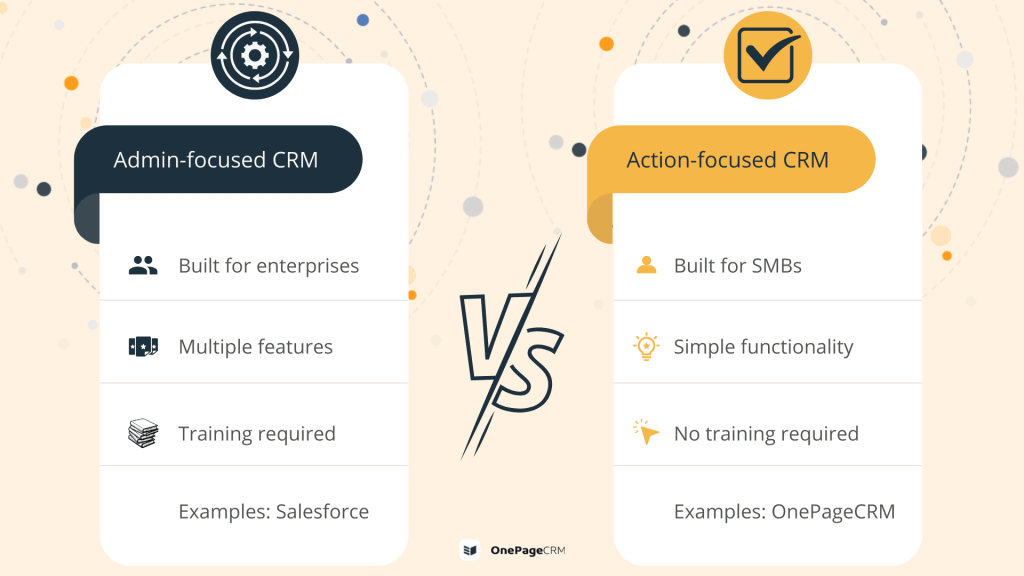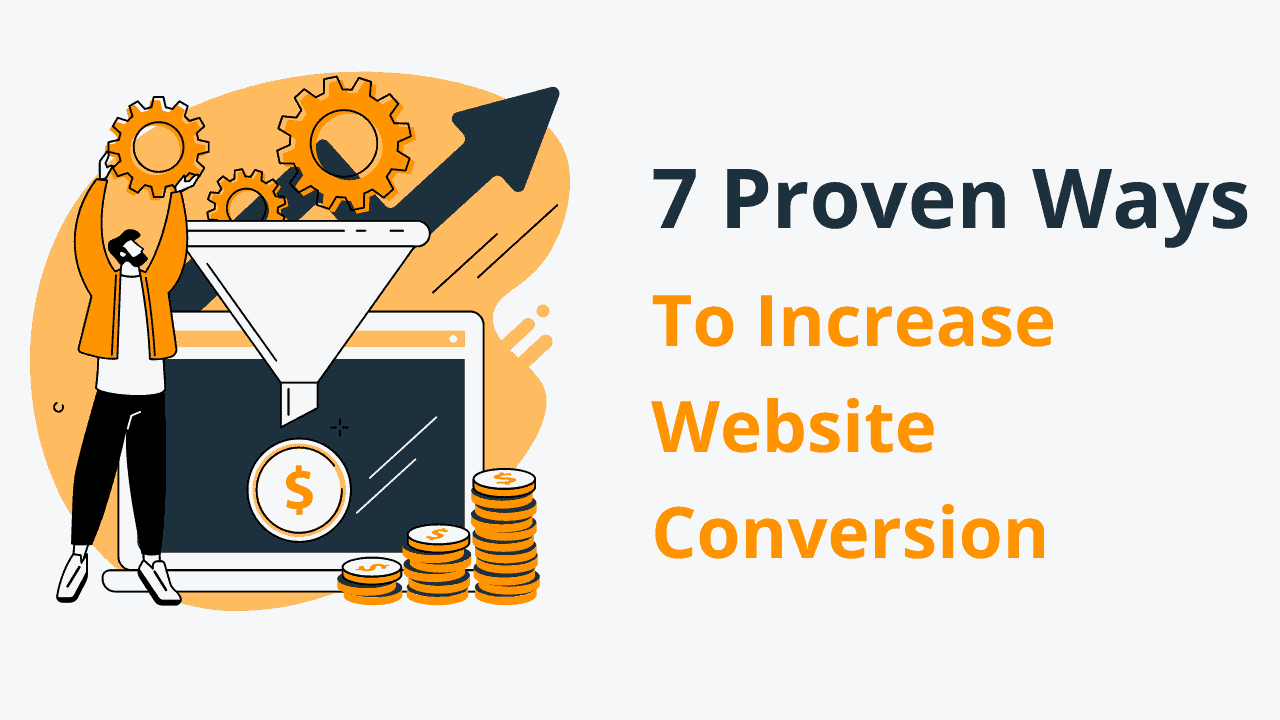

14 effective ways to increase sales in manufacturing | Tips from sales pros

Let’s get straight to the point: There’s no magic formula for increasing sales in a manufacturing business.
Nevertheless, there are a few universal do’s and don’ts that manufacturers need to keep in mind when trying to grow their sales.
We’ve summarized these universal truths in this blog post. But we didn’t want it to be yet another article on how to boost sales in a manufacturing company.
That’s why we reached out to our customers who run a manufacturing business and asked them to share practical tips based on their experience. We’ve included these tips in this article.
Whether you’re just starting out or are a seasoned sales pro looking to shake up your manufacturing sales strategy, give it a read.
1. Don’t be afraid to say “No”
The old “Yes, we can!” sales mantra is hard to give up.
But as Douglas Sutherland, Sales/Design Director at Koivu, notes in his advice, saying yes to something outside of your business scope can do more harm than good.
“Even though it’s important to put the customer first, don’t be afraid to say “no, we can’t do that” if what the client is asking for is outside of your normal mode of business.”
— Douglas Sutherland, Sales/Design Director at Koivu

Sometimes the best thing you can do for your sales revenue and your company success is actually walk away.
Why do you need to learn to say “No” to increase manufacturing sales?
- Saying “No” helps you deliver a better customer experience. Sounds a bit counter-intuitive, right? But think about it this way: if you promise to deliver something outside of your expertise, you might disappoint your customer and find yourself chasing unrealistic deadlines. This will eventually lead to frustration for both you and your customer.
“We’re a Birch plywood kitchen company, but sometimes customers ask if we can do a piece of furniture for another part of the house to match the kitchen. While often it’s doable, sometimes the request is completely outside of our usual scope. If we agree, it would mess up all our manufacturing systems, create more workload than expected, and potentially cause delays for other jobs.“
— Douglas Sutherland, Sales/Design Director at Koivu
- Saying “No” shows that you know what you are doing. In sales (and in our everyday life), confidence is key. If you are confident enough to say “No”, it will signal to your customer that you understand how your business works…and how it doesn’t. Well, of course, this “No” should be followed by an explanation. For example, “I’m afraid we can’t do this because…”
- Saying “No” helps you focus on your target audience. If you say “Yes” to every request coming from a customer, you might end up being trapped in the promises that you can’t deliver. If a customer keeps asking for more and is never satisfied with what you can offer, maybe it is not your customer, after all.
2. Ask pointed questions
In his advice, Silas Bowling, Co-Owner at Sheds By Design, focuses on simple but often overlooked truth: your sales approach should be shaped by the client’s needs.
“After 5 years of sales, the number one piece of sales advice I would give is: Listen to the clients’ needs—they will tell you how to sell to them! Ask the right questions. That will help you establish how to effectively get them the product you offer. And don’t forget to show that you care and follow up as soon as possible!”
— Silas Bowling, Co-Owner at Sheds By Design

Why do you need to ask customers questions to increase manufacturing sales?
By carefully listening to your customers and leads, you can understand:
- What they are looking for in a product
- How (and if) your product can help them solve their issue
- What communication style they prefer
- What their experience has been so far with similar products/services
- Whether this is your customer (or whether they are looking for a different type of manufacturing company)
After all, sales are about communication. The days of one-sided sales pitches are gone. Now customers have a much wider range of choices and the sales funnel is no longer a straight line.
“All customers experience different difficulties in their roles, and it’s our job to understand these pressures and offer value-oriented solutions.”
— Jeff Whyte, Engineering Manager at EFJ Engineering
3. Keep your records straight
Asking good questions is only half of the job. You also need to carefully write down every important detail.
Memory can be faulty. Especially considering that a manufacturing sales cycle can take several months.
“As a manufacturer of wiring accessories, we have a longer sales cycle. It can take 6 months or more to see a return on our follow-ups. During this time, you can easily drown in other leads coming from resellers and distributors every day.”
— Helen Chou, Sales Manager at Difvan Factory

Helen Chou, Sales Manager at Difvan Factory, underlines the importance of keeping detailed records of each client interaction to stay on the ball throughout your sales process: “My piece of advice for manufacturers is to always keep detailed records of prospect interactions, including what you talked about and any key pain points mentioned by them.”
4. Follow up as soon as you can
Studies show that if you wait longer than 5 minutes to follow up with a lead, your chances to qualify them decrease by 10x.
While that timeframe might be a bit extreme, Darren Warren, CEO at Stor-Mor Portable Buildings, agrees that the response time is key to manufacturing sales success.
“Response time is everything. Being able to follow up on a lead within 15 minutes vs two hours makes all the difference.”
— Darren Warren, CEO at Stor-Mor Portable Buildings

How can your manufacturing company follow up more efficiently?
1. Use different communication channels
You might be a big fan of emails…but what if your lead prefers phone calls?
This is why it’s important to understand what works for a particular person.
“It can be difficult to remember every customer’s individual situation, and CRM packages help massively with this.”
— Jeff Whyte, Engineering Manager at EFJ Engineering
Besides, some people switch between different communication channels very often which makes it harder for your sales team to grab their attention. If you send a few LinkedIn messages and get no reply from your prospect, it’s probably a good idea to move to email or maybe try giving a call.
Follow-ups can be scary but there are plenty of reasons why a lead didn’t reply. With the average number of emails that a person receives daily, your message might have just drowned in the information noise.
2. Send automatic emails
Response time might be everything, but let’s be honest: you don’t always have an opportunity to send a prompt follow-up email.
That’s why you need to look for a way to automate your follow-up routine. For example, check out what automation features your sales CRM has and how you can use them to speed up your processes.
3. End each conversion with a clear next step
At OnePageCRM, we developed a unique Next Action sales method. In this method, a next step in a sales process is called a Next Action.
A few examples include:
- Send a brochure
- Schedule a call
- Double-check their registration details
And so on.
The good thing about having Next Actions in your CRM right beside your leads is that they help you get the conversation going until you win the deal.
Next Actions are time-specific, meaning that they have due dates. You can set a date and time or label them as ASAP, Today, or Waiting, depending on how urgent this Next Action is.
5. Provide an exceptional customer experience
Most of your revenue is probably coming from repeat business, which means that to grow your manufacturing business, you need to focus on nurturing relationships with existing clients. Happy customers are usually more inclined to spread the word about your products and services.
Providing a good customer experience will help you stand out from competitors, increase customer loyalty, and get more referrals. Isn’t it the best way to grow your manufacturing business?
“It’s important to treat customers with respect and to try and understand how they will benefit from doing business with your organization. This could be through delivering a more reliable product, quicker lead times, or something as simple as answering their emails/calls when they reach out. A lot has to be said for a pleasant customer experience.”
— Jeff Whyte, Engineering Manager at EFJ Engineering

How can your manufacturing company provide an exceptional customer experience?
1. Have a great customer support team
Make sure that you treat every customer as an asset instead of seeing them as numbers in your database. Michael Beer, Sales and Marketing Manager at DVS Technosoft, summed it up nicely.
“The best sales communicators are relentlessly organized and attentive. To boil it down to a single piece of advice: know everything you can about your customer’s business so you can act as their advocate and advisor.”
Michael Beer, Sales and Marketing Manager at DVS Technosoft
2. Make it easy to buy from you
Customer service is not only about how you treat your customers but also about whether it’s easy for leads and clients to reach out to you.
You can use different communication channels.
For example, at OnePageCRM, we have online chat, phone support, and email support. This helps us ensure that everyone can find the channel that works best for them.
3. Provide them with all the information they need
Nowadays people are quite good at finding the information they need. There’s an abundance of articles, blog posts, webinars, etc. That’s why you need to make sure that you provide your potential and existing customers with relevant and timely content that they find valuable.
Are they looking for the best manufacturing company? Create a comparison table highlighting your strengths vs. your competitors. Do they want to learn more about what products you manufacture? Set up an online catalog.
4. Be faster than your competitors
You know how hard it is to get high-quality leads.
They are probably not sitting and waiting for you to contact them. If your competitor reaches out to them first, responds faster, and follow ups more consistently, your leads will probably choose your competitor over you (if there are no big differences between your offerings).
That’s why you need to ensure that you don’t delay the process, regularly keep in touch with your leads, and automate as much as possible.
If you’re not sure where to start, have a look at your sales process: Is there a step that can be automated or completed faster? For example, with Quick Quotes, you can send sales quotes to your leads in just 37 seconds.
6. Focus on building long-term relationships
Manufacturing sales is a long game.
Brad Wrigley, Co-Founder & CEO at Varadis, believes that building genuine and lasting relationships with your customers, as well as truly understanding them can help not only them but also your own company.
“My key advice would be to build a genuine, supportive, collaborative, and long-term business relationship with your customers. Try to really understand what problem a customer is trying to address now and what might be important to them in the future.”
— Brad Wrigley, Co-Founder & CEO at Varadis

How can a manufacturing company build strong business relationships with clients?
1. Understand what your customers need
This requires a certain level of dedication from your side.
By better understanding what your customer wants, you can provide them with better products and, consequently, improve your offerings.
“Understanding customers’ needs allows us to: provide maximum value, gain feedback on our company and technology to ultimately grow as a business, and improve our tech according to the developing industry needs which can only be done by being part of the customer’s journey long term.”
— Brad Wrigley, Co-Founder & CEO at Varadis
2. Listen to their feedback
Long-term relationships are all about communication. Besides, they are built on trust.
You can win your customers over by carefully listening to what they tell you, delivering on your promises…and acting upon the feedback you receive.
3. Go above and beyond their expectations
Go the extra mile to show how you value your customers. It can be something as simple as giving them a call and asking if they are satisfied with your product.
Be proactive. Find out what your customers wish you had. Is it possible for you to add this to your product/services?
4. Take a personal approach with every client
While you’re a small business, it’s easier for you to build meaningful relationships with leads and customers. Make them feel seen: notice small details that they share with you and communicate regularly.
7. Use an action-focused CRM
If you think about it, what does it take to grow a business?
Yep, it’s a tricky question. You can give different answers but probably one thing that will stand out in most answers is consistency.
In order to grow a business, you have to be consistent.
Successful business owners move towards their goal step by step, every day, until they get there. And even when they get there, they probably won’t stop: they’ll set another goal and will continue moving towards it until they reach it. And so on.
This simple step-by-step idea lies at the heart of an action-focused CRM.
Most CRM systems today are admin-focused.
They focus on storing information rather than proactively managing it. When you open an admin-focused CRM, your contacts are sorted either by the last date added or by alphabetical order. While there’s nothing wrong with this approach, it’s not ideal for a growing business that needs to be constantly moving toward its goal.
That’s why an action-focused CRM, like OnePageCRM, emerged.

In OnePageCRM, you work with your database from an Action Stream.
This is a dynamic list of contacts where every lead or customer has a task or reminder with a due date next to them. This helps small businesses organize their database in a more efficient way, focus on every sales opportunity, and provide better customer experience to their clients.
“By strategically organizing our leads, we have optimized our sales funnels with higher quality leads, shorter close times, and better customer relationships. This allows us to be more efficient and increase our overall productivity.”
— Darren Warren, CEO at Stor-Mor Portable Buildings
So if you’re thinking about choosing a simple CRM for your manufacturing business, try giving an action-focused CRM a try.
8. Align sales and marketing
Aligning sales and marketing teams is the most common advice everyone is giving. And there’s a good reason for this.
While marketing is responsible for getting your company publicly noticed, your sales team will be the one dealing with incoming leads.
That’s why both teams should be on the same page and have a mutual understanding of what your ideal customer looks like.
Otherwise, marketing will be bringing irrelevant leads and sales won’t be able to close many deals.
9. Automate where possible
You’ve probably heard this piece of advice multiple times before.
But automation doesn’t have to be anything fancy or reserved only for large organizations with big budgets.
As a small manufacturing business, you don’t need an all-in-one automation system with lots of functionality. Your automation can be as simple as having a pre-defined list of products instantly added to your deal each time you create one. With a simple feature like this, you can save a few minutes every day.
10. Focus on lead generation
… but only after your marketing and sales teams are aligned.
Explore different opportunities to get out there and be noticed by your leads. Be creative to stand out from competitors.
You can use traditional channels, like billboards, or you can go full digital with Google ads, search engine optimization (SEO), social media, and so on.
But before increasing the number of incoming leads, make sure that your manufacturing business is ready to take on an additional workload. If you don’t have the capacity right now, then it’s better to wait with this step.
11. Fancy up your website
The website for your manufacturing business doesn’t have to have an award-winning design to compete with Apple and the likes. But it should be pleasant to look at, with easy navigation and all important information readily available.
Optimize your website not only for search engines but also for people. After all, Google algorithms might be ruling the digital world, but they are not your customer.
12. Be active on social media
This doesn’t mean that you need to post ten posts every day, as some big companies do, or spend every waking minute of your life thinking about social media.
But if a potential customer opens your social media channel and sees that your business is active, it can help them make up their mind.
13. Improve your products quality
If you have better products or services than your competitors, people and businesses are more likely to buy from you. Having a great product is tried and tested method to increase sales.
Here’re a few questions you can ask yourself:
- Is the quality of your products up to industry standards?
- Is there anything you are missing?
- What can you do about this?
14. Re-examine your internal processes
If you’re looking for ways to grow your manufacturing business, re-visiting your internal processes and looking at them with fresh eyes can help you see a bigger picture.
It’s way too easy to get used to the way things are done. And the usual way is not always the best way.
In summary
To sum up this article, we want to share this great quote from Michael Beer:
“Selling manufacturing or engineering services is a unique skill set with a high risk/reward quotient. Ultimately, the difference between wins and losses comes down to understanding the newest solutions for your vertical market, being cost-competitive, and, most importantly, communication.”
— Michael Beer, Sales and Marketing Manager at DVS Technosoft

These three ingredients may be the most important piece of advice that one can give to a manufacturing business.
Are you in manufacturing sales yourself or know about the challenges that come with them? We want to hear from you! What is your number one sales advice? Let us know in the comments or tweet us @OnePageCRM!
We’ve already discovered the top tips from the sales gurus in Agencies and IT companies (some of them are relevant across industries, so have a read!).












